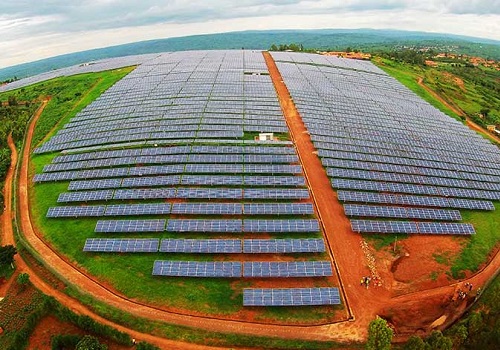Interest in blended finance is growing in popularity, so it seems. Having personally designed and invested in multiple transactions involving blended finance structures, I felt it was time to take a step back from my usual discussion topics to describe what blended finance is, what conditions should be met for it to work well, and to delve into the thornier question of whether it is even necessary.
What is Blended Finance?
Blended finance is a capital structure wherein more risk tolerant (“catalytic”) capital from philanthropic or government sources takes a first-loss position to more risk averse (“commercial” or “private sector”) capital, thereby mobilizing the risk-averse capital into impact investments that seek to achieve Sustainable Development Goals. This catalytic capital “de-risks” the investment opportunity, making it economically viable, typically by charging a rate of return that is considered below market, or not fully risk-adjusted. Convergence (the global network for blended finance) provides examples of these structures here.
This blending of different types of capital to achieve development impact is usually possible when three conditions are met. First, the risk of the investment opportunity is perceived to be high, usually because the sector or business model is earlier stage and, therefore, the risks harder to quantify. Second, to make the economics of the investment viable, the catalytic capital has to be able to provide a degree of subsidy by earning a return that commercial investors perceive as not fully risk-adjusted. Third, both types of capital have to see the investment opportunity as a “win-win.” This is usually possible if all parties are interested in achieving a development impact even if the secondary motivations for doing so might differ.
The commercial capital might be driven by positive publicity or reputation enhancement as well as impact. It might also be motivated by the ability to make a larger investment than it otherwise would have. The catalytic capital, in turn, can make a loss because it achieves social impact returns that are orders of magnitude larger than what could have been achieved through charitable giving alone. Donations by definition earn a -100% return, so philanthropic capital finds even a partially loss-making blended-finance investment preferable to charitable giving, as any amount of capital that comes back can be reinvested.
The utility-scale, grid-connected, 8.5 MW solar field in Rwamagana, Rwanda © USAID/Power Africa/Sameer Halai
Varying Opinions on Blended Finance
For some, the idea of providing a subsidy through blended finance is controversial. For example, a recent Stanford Social Innovation Review article argued that, “impact investors should not want to change the financial structure of an investment with a subsidy, as that would mask an investment’s true price and encourage investors to make investments they would otherwise avoid [resulting] in the wrong factories getting built and the wrong businesses getting support—a waste of financial resources and a missed opportunity to achieve social gains.”
As economists will tell you, subsidies can (and do) fall prey to the law of unintended consequences. Take, for example, kerosene, a dangerous and highly polluting fossil fuel used for lighting by India’s rural poor, which is government subsidized. Unfortunately, the subsidy has resulted in a thriving black market and has had the unintended consequence of making cheaper, cleaner solar-powered light sources less competitive. If the private sector is not willing to invest in something because risk-adjusted returns cannot be earned, then (the argument goes) a subsidy must be destroying, not adding, value by inducing private investment to happen where the free market would have otherwise steered clear.
However, I think there are two strong arguments to be made in favor of blended finance, even at the risk of “distorting” the free market. As mentioned earlier, because many social enterprise business models are nascent and not well understood, there is a perceived higher risk to investing. Although the past cannot predict the future, investors are always looking to the past for data to determine what is likely to happen in the future. For this reason, blended finance helps build a market by creating a track record. By causing investments to happen, blended finance allows commercial investors to understand the risks better and get comfortable with them. Once the risks are known, they are easier to analyze and quantify.
If done correctly, blended finance should enable the private sector to invest in the future on its own, without a subsidy. The microfinance sector went through a similar evolution. Some microfinance institutions still receive subsidies, particularly in the form of soft loans but, by and large, microfinance has achieved commercial scale and is able to attract private investment, thanks in part to subsidies received in its earlier days.
Why Blended Finance is Necessary
This argument in favor of blended finance is akin to the “infant industry” argument in economics. By catalyzing investment into these nascent sectors, blended finance helps them scale them up and commercialize. In its original form, the infant industry argument advocates in favor of subsidies or tariffs to protect early stage national industries from foreign competition, enabling them to achieve economies of scale and compete on an even playing field. While not a perfect comparison, this modified infant industry argument suggests that blended finance is helping to scale up social enterprise models to achieve commercialization. In doing so, it’s enabling them to compete with (or disrupt) incumbent status quo business models (or business as usual).
The key to any infant industry argument, of course, is that the infant grows up and can stand on its own. The subsidy should, therefore, be temporary. If not, then the business model may be flawed and may never achieve scale and sustainability. That’s why providers of catalytic capital should monitor progress and keep an eye on this end goal.
Another strong argument in favor of blended finance is urgency. If markets are efficient, then capital should naturally flow to those social enterprise models that have good long-term prospects. However, markets are not always efficient and this process can be slow. Time is not on our side if we want to address the pressing needs of reducing poverty and the root causes of climate change.
Catalytic capital is called “catalytic” for this reason: it helps mobilize money more quickly and in larger quantities than might happen otherwise. Advocates for blended finance often refer to this mobilization as getting from “billions to trillions.” To achieve the Sustainable Development Goals, trillions of investment is needed, and in order to achieve these volumes sooner rather than later, blended finance is pivotal.
Blended finance should be a bridge, not a crutch, and it should not distort the free market, but disrupt it in ways that replace older, inefficient ways of doing business with ones that sustainably benefit the environment and society. Getting to commercial scale and profitability should be the goal of every entrepreneur and every impact investor. Blended finance is just one tool in our toolkit, but it is a powerful one, if wielded properly.
Anthony Randazzo is the author of the Impact Money Blog, a source of news and information about impact investing and social entrepreneurship


